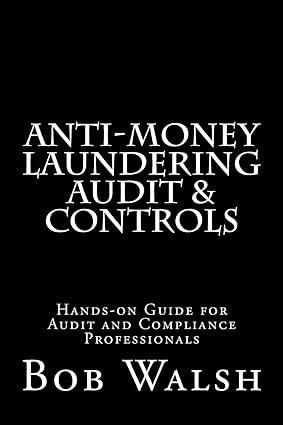Question
Case on Job-Order Costing: Dental Practice Dr. Alyx Hemmings is employed by Mesa Dental. Mesa Dental recently installed a computerized job-order costing system to help
Case on Job-Order Costing: Dental Practice Dr. Alyx Hemmings is employed by Mesa Dental. Mesa Dental recently installed a computerized job-order costing system to help monitor the cost of its services. Each patient is assigned a job number when he or she checks in with the receptionist. The receptionist-bookkeeper notes the time the patient enters the treatment area and when the patient leaves the area. This difference between the entry and exit times is the number of patient hours used and the direct labor time assigned to the dental assistant. (A dental assistant is constantly with the patient.) The direct labor time assigned to the dentist is 50 percent of the patient hours. (The dentist typically splits her time between two patients.) The chart filled out by the dental assistant provides additional data that is entered into the computer. For example, the chart contains service codes that identify the nature of the treatment, such as whether the patient received a crown, a filling, or a root canal. The chart not only identifies the type of service but its level as well. For example, if a patient receives a filling, the dental assistant indicates (by a service-level code) whether the filling was one, two, three, or four surfaces. The service and service-level codes are used to determine the rate to be charged to the patient. The costs of providing different services and their levels also vary. Costs assignable to a patient consist of materials, labor, and overhead. The types of materials usedand the quantityare identified by the assistant and entered into the computer by the bookkeeper. Material prices are kept on file and accessed to provide the necessary cost information. Overhead is applied on the basis of patient hours. The rate used by Mesa Dental is $32 per patient hour. Direct labor cost is also computed using patient hours and the wage rates of the direct laborers. Dr. Hemmings is paid an average of $60 per hour for her services. Dental assistants are paid an average of $20 per hour. Given the treatment time, the software program calculates and assigns the labor cost for the dentist and her assistant; overhead cost is also assigned using the treatment time and the overhead rate. The overhead rate does not include a charge for any X-rays. The X-Ray Department is separate from dental services; X-rays are billed and costed separately. The cost of an X-ray is $12 per film; the patient is charged $15 per film. If cleaning services are required, cleaning labor costs $35 per patient hour. Glen Johnson, a patient (Job 267), spent 30 minutes in the treatment area and had a two-surface filling. He received two Novocaine shots and used three ampules of amalgam. The cost of the shots was $14 ($7 each). The cost of the amalgam was $6 per ampule. Other direct materials used are insignificant in amount and are included in the overhead rate. The rate charged to the patient for a two-surface filling is $110. One X-ray was taken. Required: 1. Prepare a job-order cost sheet for Glen Johnson. If required, round your answers to the nearest cent. If an answer box does not require an entry, leave it blank. Job-Order Cost Sheet Job 267 MATERIALS DIRECT LABOR OVERHEAD Kind Amount Employee Hrs. Rate Amount Hrs. Rate Amount Novocaine $ 14 Dentist 0.25 $ 60 $ 15 0.5 $ 32 $ 16 Amalgam 18 Asst. 0.5 20 10 Cost Summary Direct materials $ 32 Direct labor 25 Overhead 16 Total cost $ 73 Feedback Correct What is the cost for providing a two-surface filling? $ 73 What is the gross profit earned? $ 37 2. Suppose that the patient time and associated patient charges are given for the following fillings: 1-Surface 2-Surface 3-Surface 4-Surface Time 20 minutes 30 minutes 40 minutes 50 minutes Charge $90 $110 $150 $175 Compute the cost for each filling and the gross profit for each type of filling. Assume that the cost of Novocaine is $14 for all fillings. Ampules of amalgam start at two and increase by one for each additional surface. Assume also that only one X-ray film is needed for all four cases. When required, round intermediate calculations and final answers to the nearest cent. Type Total Cost per Filling Gross Profit per Filling 1-Surface $ 77.00 $ 28 2-Surface $ 102.5 $ 22.5 3-Surface $ 128 $ 37 4-Surface $ 153.50 $36.5
Step by Step Solution
There are 3 Steps involved in it
Step: 1

Get Instant Access to Expert-Tailored Solutions
See step-by-step solutions with expert insights and AI powered tools for academic success
Step: 2

Step: 3

Ace Your Homework with AI
Get the answers you need in no time with our AI-driven, step-by-step assistance
Get Started


